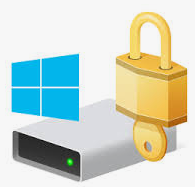Bitlocker Drive Encryption

- Open Control Panel.
- Go to System and Security, then click BitLocker Drive Encryption.
- Under "Fixed data drives," select the partition (e.g., F:\) you want to encrypt and click Turn on BitLocker.
- Choose an unlock method — typically, "Use a password to unlock the drive". You may also use a smart card if available.
- Create and confirm your password. (For example: AIT@2025)
- Select a method to back up your recovery key (Microsoft Account, USB drive, file, or print). Choose Save as a file.
- Choose the encryption option:
- Encrypt used disk space only (faster, best for new drives)
- Encrypt the entire drive (slower, recommended if the drive is already in use)
- Select encryption mode:
- New encryption mode (best for fixed drives)
- Compatible mode (best for drives you may move to other devices)
- Click Start encrypting and wait for the process to finish.
- You can manually Lock the volume using PowerShell:
- Search → type PowerShell → Run as Administrator
manage-bde -lock F:(to lock)manage-bde -unlock F:(to unlock)
- Restart your computer to apply changes if prompted.
Once complete, your partition will be locked and protected by BitLocker. To access it, you must provide your chosen password or unlock method each time you restart or reconnect the drive.
Notes:-
- The encryption process time depends on the size of partition and used space.
- Always save your recovery key in a secure place — you will need this if you forget your password.
- You can suspend, back up the key, change/remove password, or turn off BitLocker afterward via the same menu.
Hands-on Labs for the practice :
- Create a Simple volume of 2GB size with NTFS filesystem.
- Extend partition and increase the size of volume by 1GB in a given computer.
- Shrink the partition by 1500MB.
- Create Spanned volume using two HDDs and 2GB size.
- Create a Stripped volume with two HDDs of 2GB each.
- Create a Mirror volume with 3GB size on Windows 10 PC.
- Apply Bitlocker on data volume in the Win 10 PC.